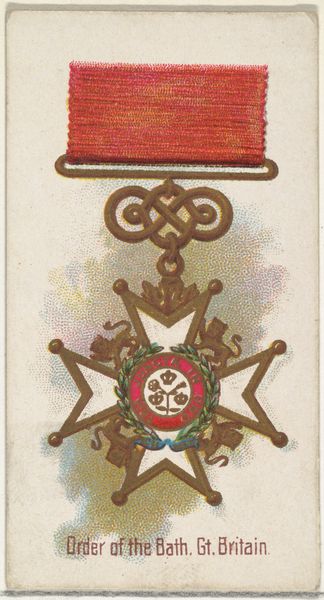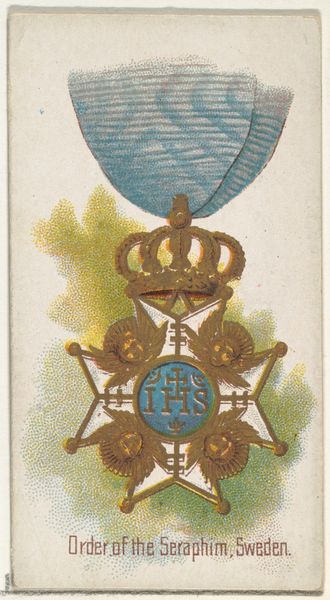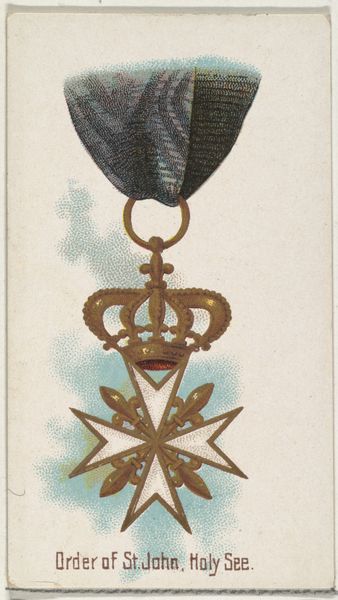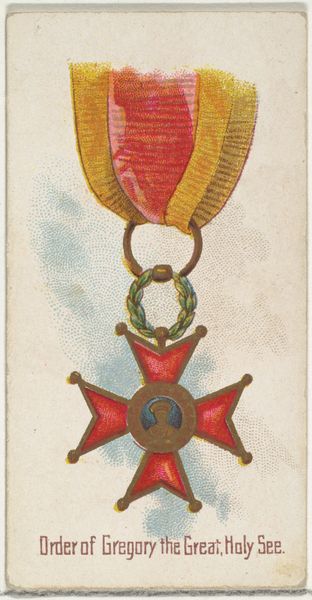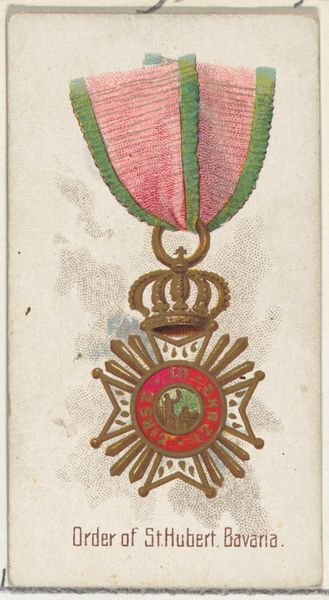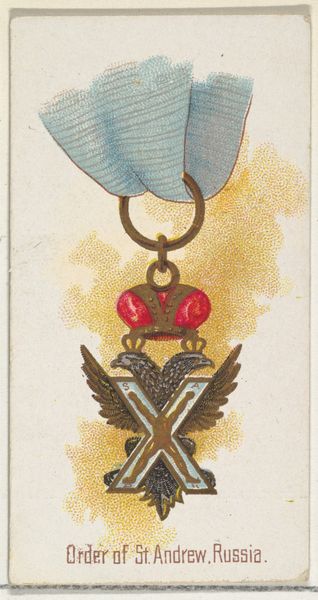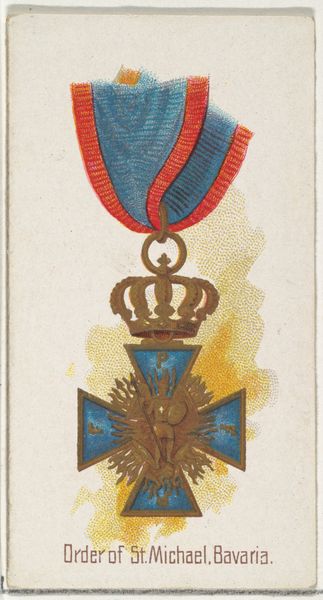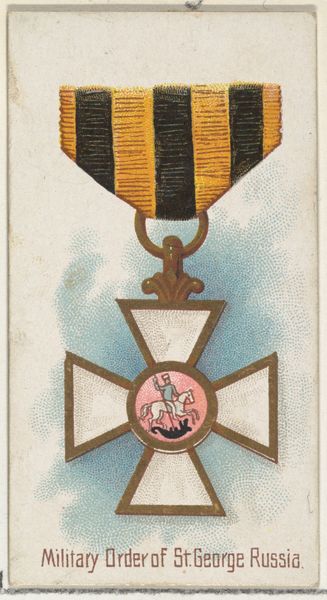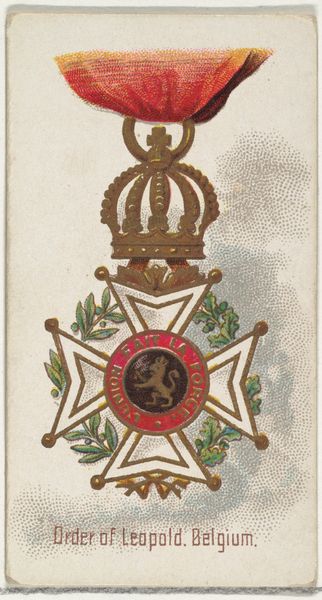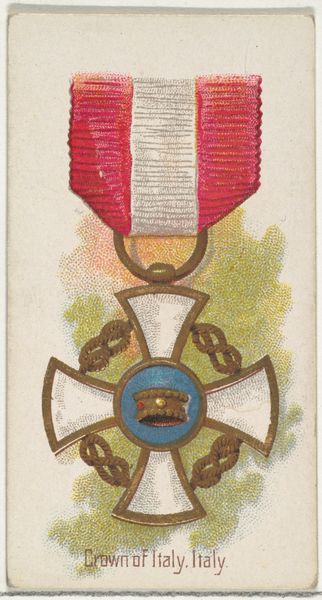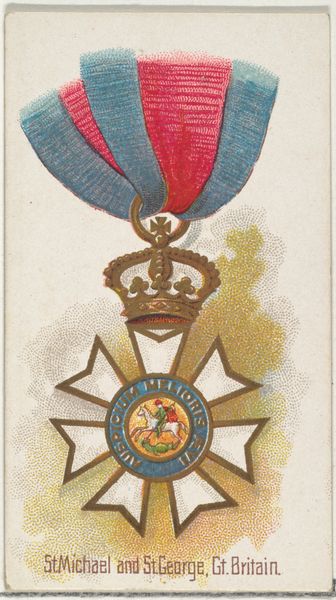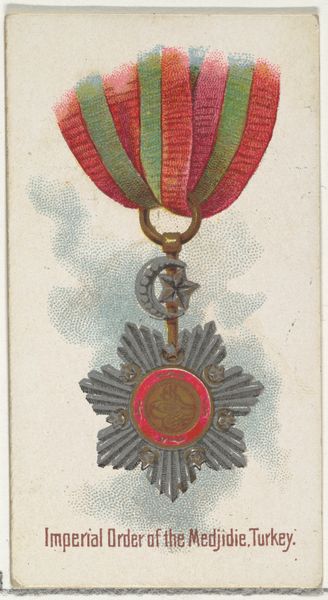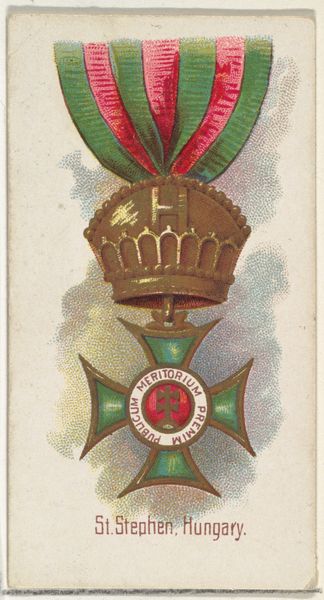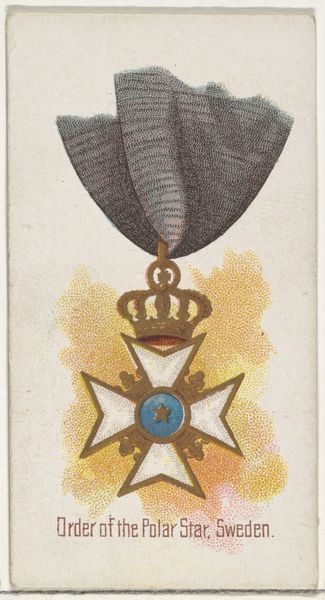
St. Olaf, Norway, from the World's Decorations series (N30) for Allen & Ginter Cigarettes 1890
0:00
0:00
drawing, coloured-pencil, print
#
drawing
#
coloured-pencil
# print
#
coloured pencil
#
decorative-art
Dimensions: Sheet: 2 3/4 x 1 1/2 in. (7 x 3.8 cm)
Copyright: Public Domain
Editor: This is an image of the Order of St. Olaf from Norway, dating to 1890. It’s from a series of cigarette cards by Allen & Ginter, done in colored pencil and print. I find the graphic quality interesting for the time. What strikes you when you look at it? Curator: The Order of St. Olaf, initially intended as a symbol of national unity and royal recognition, also reflects the socio-political hierarchies of the late 19th century. This image, reproduced on a cigarette card, transforms a symbol of elitism into a consumer item. Doesn't this democratisation of imagery through commercial means raise questions about how power and privilege are perceived and disseminated? Editor: It definitely feels like there's an element of co-opting power in advertising here. The everyday person is holding power within their hand, but how would that power be applied, outside of feeding this consumption? Curator: Precisely! The card creates a sense of accessibility to power. We might think about Michel Foucault’s ideas regarding power dynamics – how these images perpetuate ideologies, shaping societal norms around national identity and the very structure of reward within it. Consider how gender might play into it, too – who do you think were the primary consumers, and how might this idealized image resonate (or not) with their identities and aspirations? Editor: Men were probably the target demographic for the cigarettes. Did they aspire to nobility by purchasing such items? How might it reinforce masculine ideals linked to nationhood and social standing? Curator: It could do exactly that! By analyzing this image, can't we decode the values that late 19th-century society sought to project and internalize? Think about the medal's design - a fierce lion against red - which promotes very direct ideals about Norway's strength. It encourages looking critically at the role of objects, even small ones, in constructing these cultural meanings and their ties to commerce. Editor: It's fascinating how this small card packs so much socio-political meaning. Now I see the image as less of an item for collection, but something which acts to build specific masculine ideas through consumerism. Curator: Exactly! It is these deeper explorations and conversations, even sparked by something as unassuming as a cigarette card, that give depth to historical meaning.
Comments
No comments
Be the first to comment and join the conversation on the ultimate creative platform.
